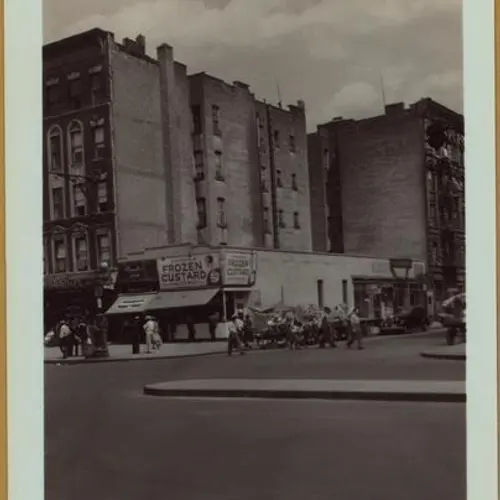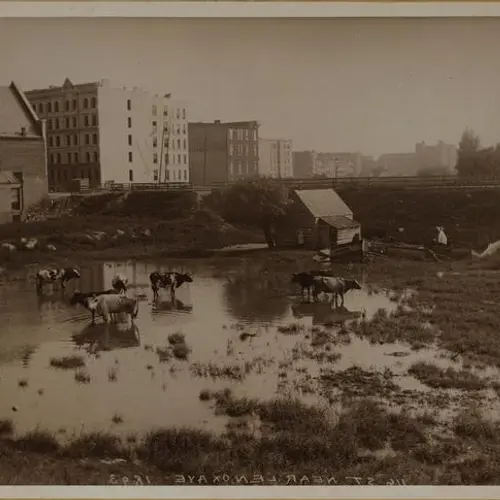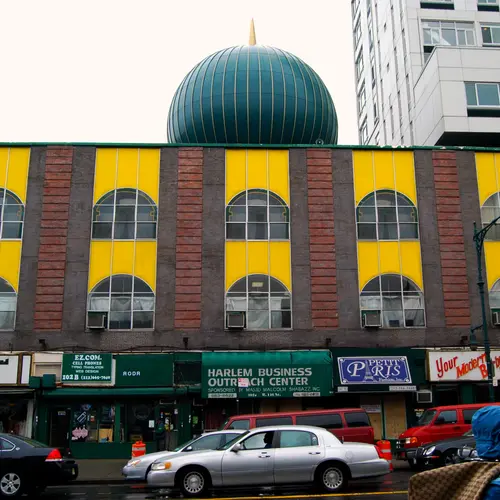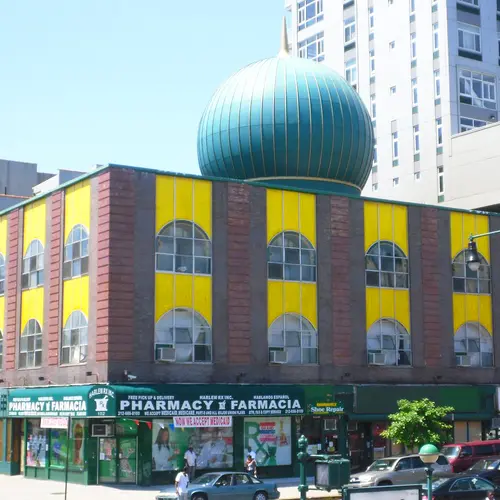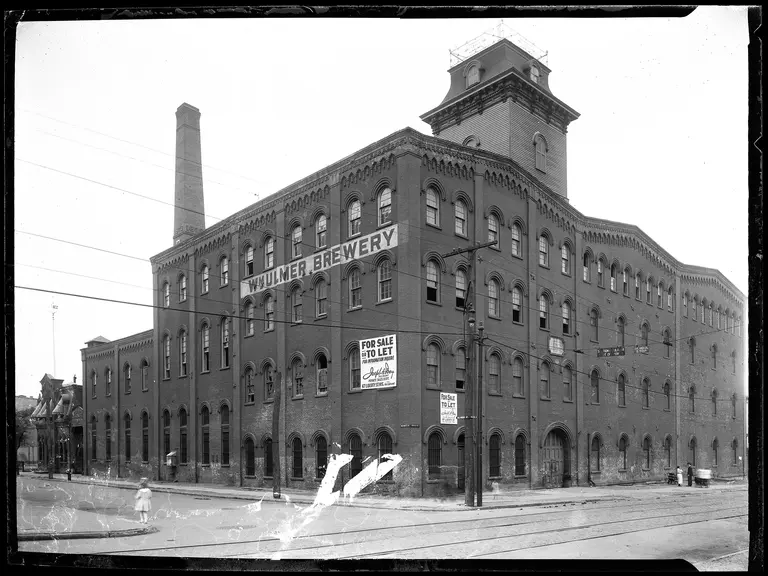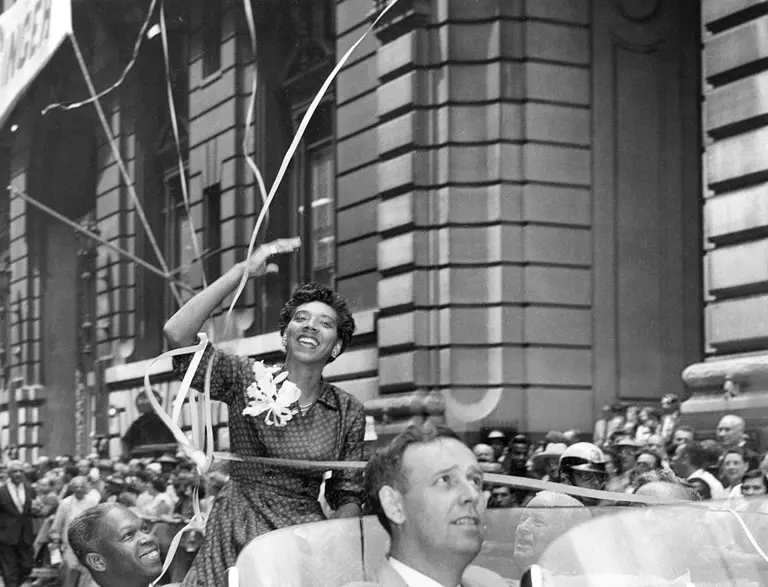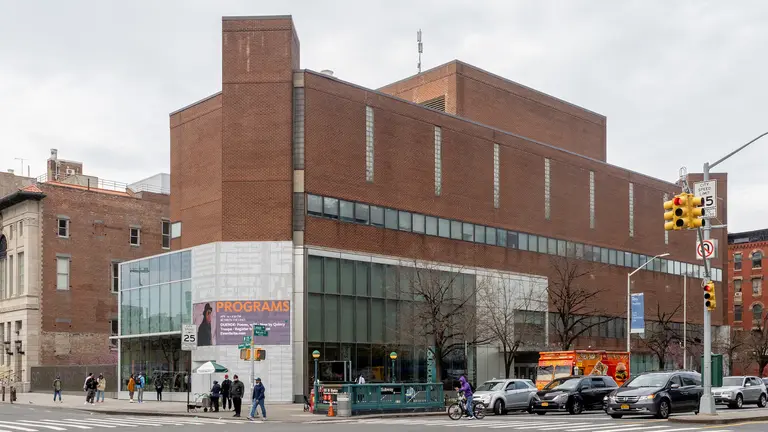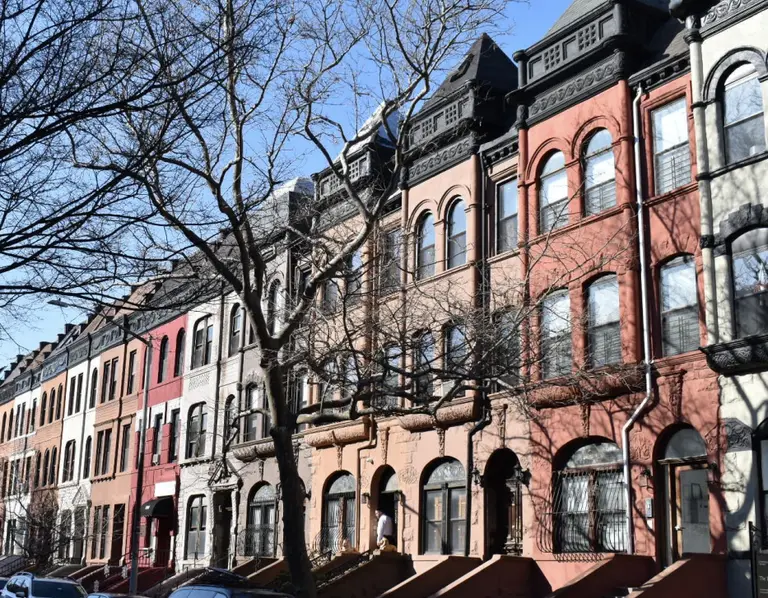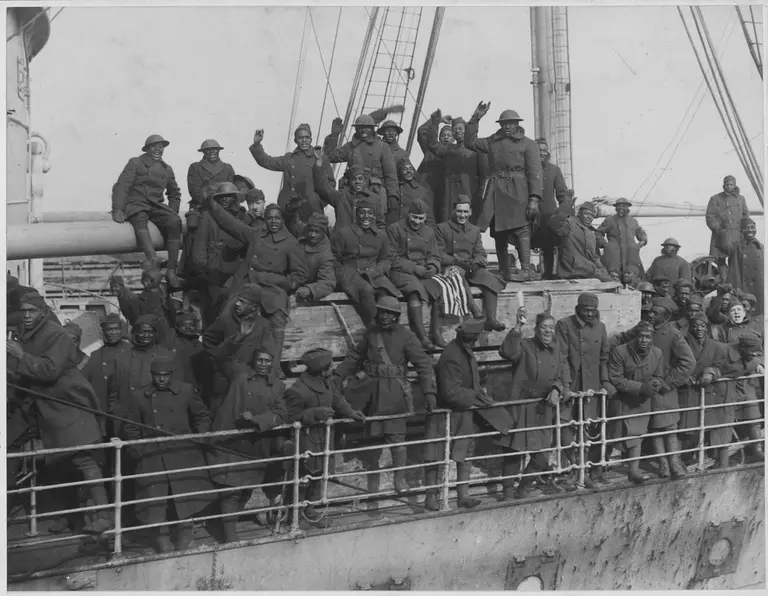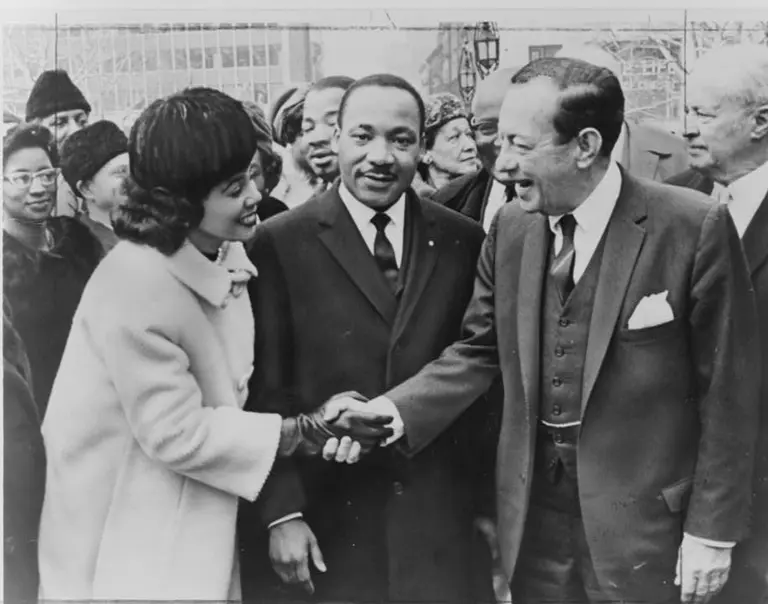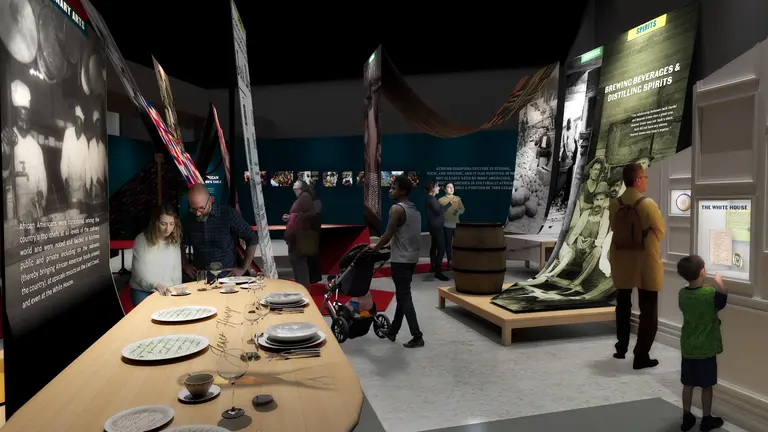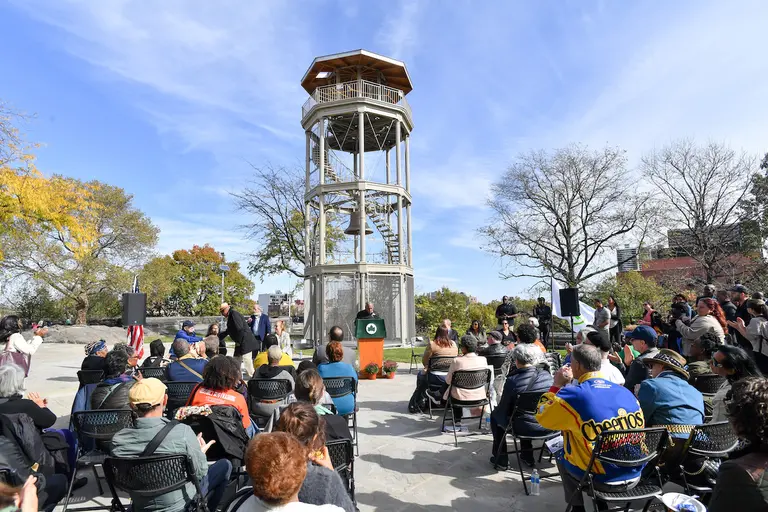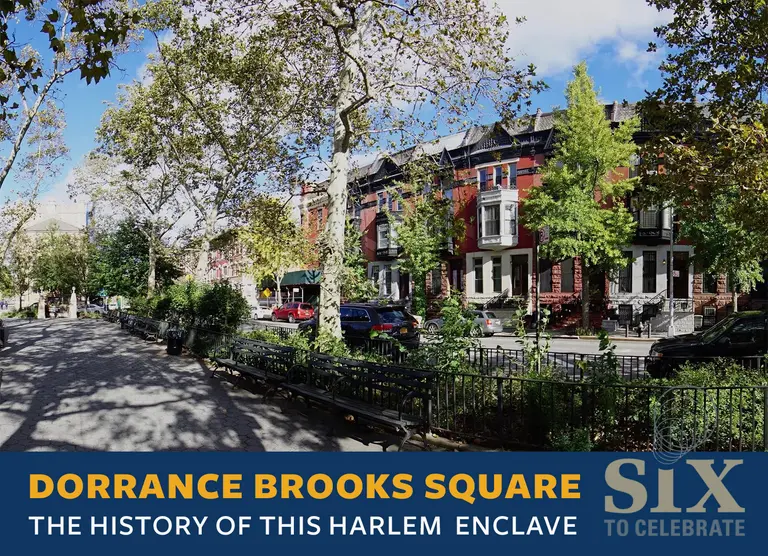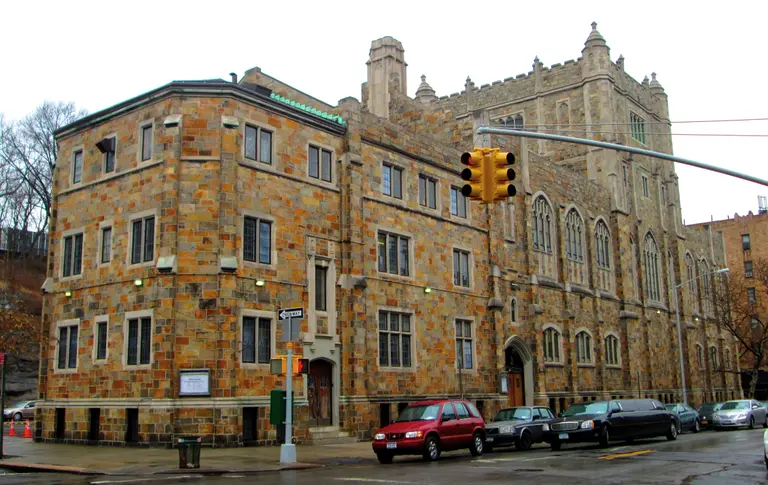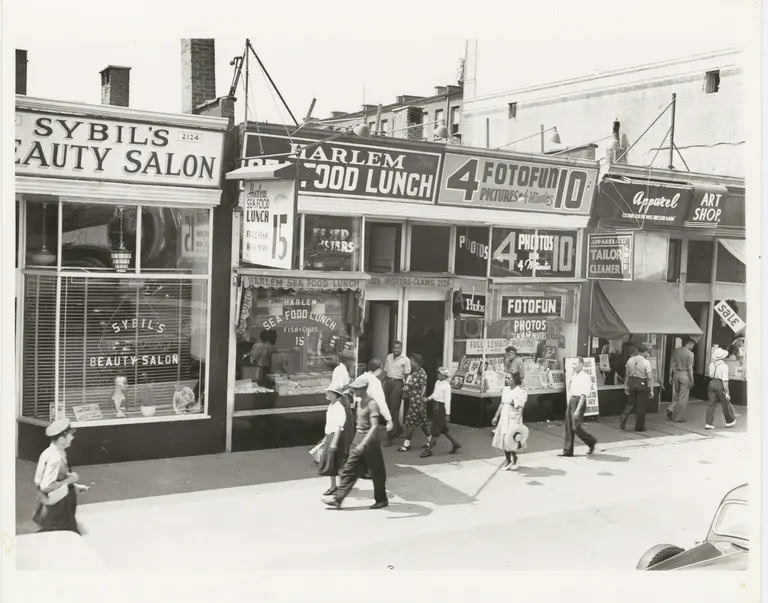From casino to Malcolm X: The colorful history of Harlem’s Malcolm Shabazz Mosque
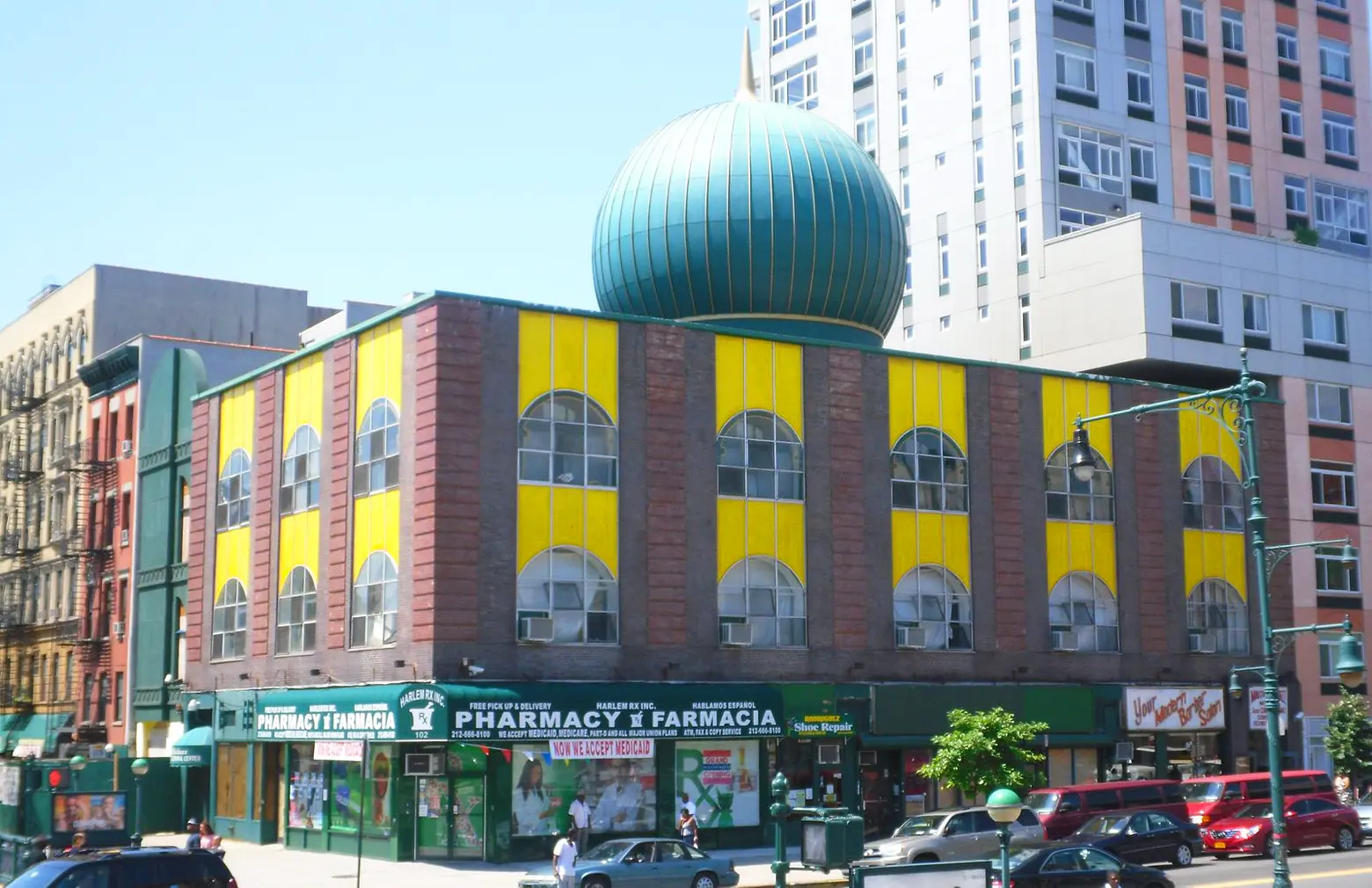
Photo via Wiki Commons
At 102 West 116th Street in Harlem sits a mosque singularly incorporated into the cityscape. The building houses street-level commercial businesses and is topped by a large green dome, the structure in-between used as a Sunni Muslim mosque. While the property has seen much local history pass through it, it is not landmarked.
Before becoming a religious structure, the lot used to contain the Lenox Casino, a space which was often rented for meetings by the Socialist Party and used as a theatrical performance venue for a number of then-renowned artists. Built in 1905 and designed by Lorenz F. J. Weiher, the Lenox Casino was raided in 1912 for showing “illegal films” in an escapade grippingly documented by the New York Times.
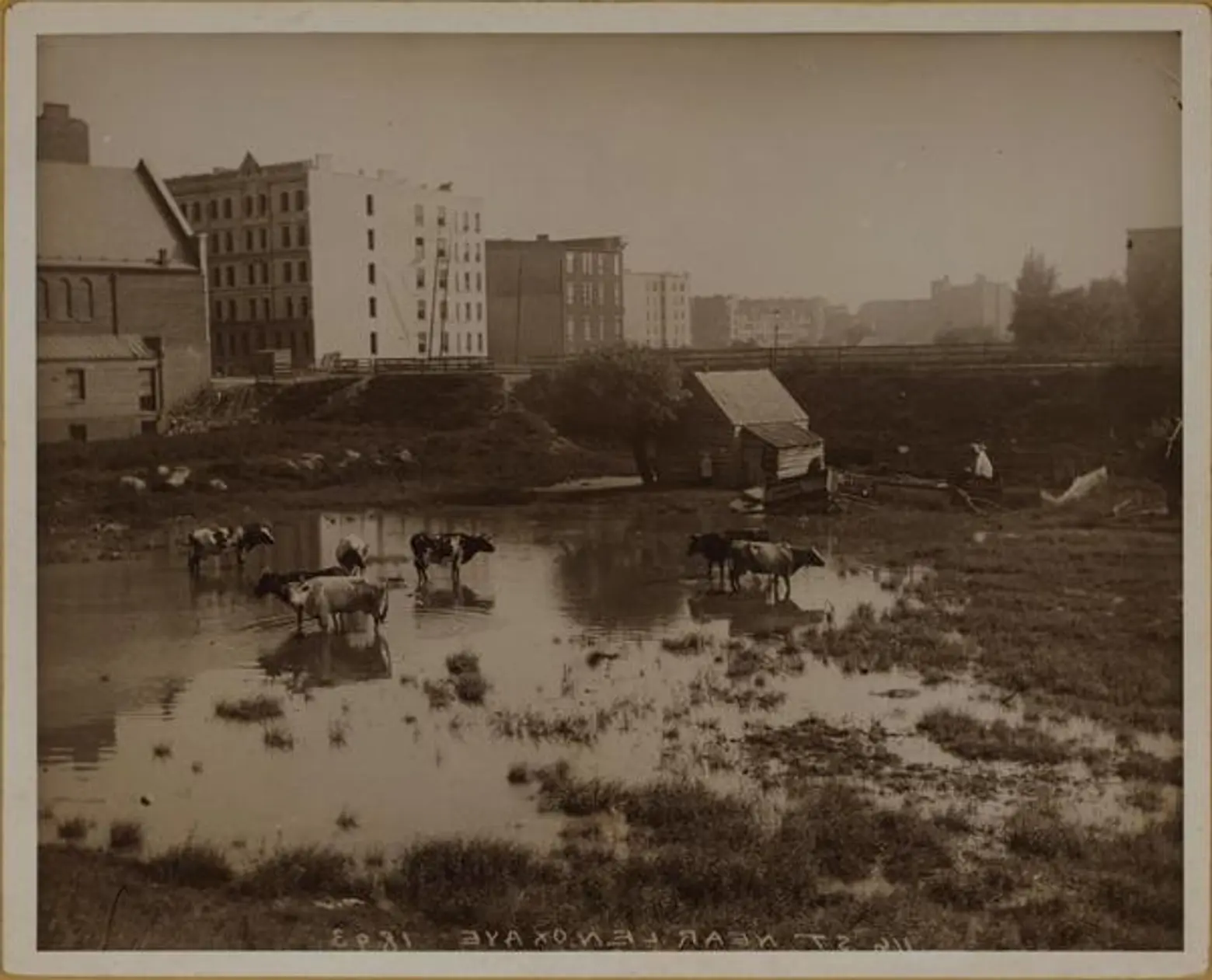 A cow pasture at the corner of what is now 116th Street and Malcolm X Boulevard in 1893. Courtesy of the Schomburg Center for Research in Black Culture, NYPL
A cow pasture at the corner of what is now 116th Street and Malcolm X Boulevard in 1893. Courtesy of the Schomburg Center for Research in Black Culture, NYPL
The chronology of the following years, involving the building’s transition from casino to religious space are a bit unclear, but what would become the Nation of Islam’s Temple No. 7 (later renamed Mosque No. 7 as part of a nationwide change) had very humble beginnings. It seems that the building began being used as a storefront church in the early 1950s. Around this time, in 1954, Malcolm X was named minister, according to David W. Dunlap’s guide to Manhattan’s houses of worship. In Alex Haley’s The Autobiography of Malcolm X, there are a number of lines regarding the temple. By 1964, Dunlop reports, Malcolm had stopped preaching at Mosque No. 7, opening the Muslim Mosque instead.
Following Malcolm X’s assassination the following year, in 1965, Mosque No. 7 was firebombed in a dynamite blast and destroyed. One Sabbath Brown redesigned the space over a decade later in 1976, giving it the modern appearance (albeit today lacking its former crown, a golden crescent) it has today as well as a new co-name – Masjid Malcolm Shabazz, in honor of Malcolm X.
On April 14, 1972, the mosque again made the news in an event which has become known as the Harlem mosque incident. NYPD officers Phillip Cardillo and his partner Vito Navarrai, in response to what turned out to be a phony 911 call, entered the mosque and were ambushed, Cardillo fatally shot. The contentious event had two intensely opposing stories from the sides of the cops and the congregants and sparked much public anger against then-Mayor John Lindsay’s administration.
Today, the mosque hosts interfaith congregants, a school and continues to be a hub of religious life on an otherwise intensely changed corner of Harlem.
RELATED:
